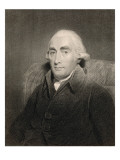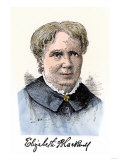|
|
|
|
|
Adolph Emil von Behring
b. 3-15-1854; Hansdorf, Prussia (now Poland)
d. 3-31-1917; Marburg, Hesse-Nassau
Emil von Behring was a physician and physiologist who discovered the diphtheria antitoxin. He was awarded the first Nobel Prize in Physiology or Medicine in 1901 “for his work on serum therapy, especially its application against diphtheria, by which he has opened a new road in the domain of medical science and thereby placed in the hands of the physician a victorious weapon against illness and deaths”.
FYI ~ the Iditarod Dogsled Race commemorates the the 1925 effort to get the diphtheria serum to Nome, Alaska, preventing an epidemic (also see the animated/live action movie Balto).
|
|
|
|
Mary Ann Bickerdyke
b. 7-19-1817; Knox County, Ohio
d. 11-8-1901; Bunker Hill, Kansas.
Mary Ann Bickerdyke practiced 'botanic' medicine as a means of supporting herself and sons after the death of her husband prior to the Civil War.
Sent with medical supplies by the community of Galesburg, Illinois to help wounded Union soldiers, she won the confidence of U.S. Grant who appointed her his chief of nursing, and the appreciation of the soldiers who called her “Mother”. By the end of the Civil War Bickerdyke had built 300 hospitals and helped the wounded in 19 battlefields.
After the Civil War Bickerdyke became an attorney and helped veterans with legal issues.
|
|
|
|
Joseph Black
b. 4-16-1728; Bordeaux, France
d. 12-6-1799; Edinburgh, Scotland
Physician Joseph Black is remembered best for his discoveries of latent heat, specific heat, and carbon dioxide. Black was both professor of Medicine and lecturer in Chemistry at University of Glasgow. It was at the University that he met and conducted experiments on steam with the instrument maker James Watt. The chemistry buildings at both the University of Edinburgh and the University of Glasgow are named after Black.
|
|
|
|
Elizabeth Blackwell
b. 2-3-1821; Bristol, England
d. 5-31-1910; Hastings
Elizabeth Blackwell, the first woman earn a Medical Doctor (MD) degree and become a doctor in the United States (1849), was from a Quaker family active as abolitionists and in the women's suffrage movement.
To prepare herself for medical school Blackwell boarded with physicians in order to read in their libraries as she taught school to earn money for a medical education.
Only one school admitted Blackwell, Geneva Medical College, and she was allowed to attend only because the male students voted her in as a joke.
After graduation she was banned from U.S. teaching hospitals so she interned at La maternité, Paris, and St. Bartholomew's Hospital in London. In 1857, she, along with her sister Emily (3rd woman medical graduate) and Marie Zakrzewska (also a physician), set up the New York Infirmary for Indigent Women and Children, after years of professional and social shunning. Blackwell helped trained nurses in the US Civil War, and in 1868 established the Women's Medical College.
Blackwell returned to England, and with Florence Nightingale opened a medical school for women there.
Elizabeth Blackwell was a sister-in-law to Lucy Stone.
Elizabeth Blackwell quotes ~
• “Our school education ignores, in a thousand ways, the rules of healthy development.”
• “For what is done or learned by one class of women becomes, by virtue of their common womanhood, the property of all women.”
• “If society will not admit of woman's free development, then society must be remodeled.”
• Elizabeth Blackwell: First Woman Physician (Great Life Stories)
• National Library of Medicine
• Heroes of Science & Technology posters
|
|
|
|
Sir Gilbert Blane
b. 8-29-1749; Ayrshire, Scotland
d. 6-26-1834; London
Gilbert Blane was the physician who instituted diet and sanitary health reforms in the Royal Navy requiring lemon juice in order to prevent scuvy (a deficiency of vitamin C).
FYI ~ When lemons were replaced by limes that were available in Britain's Caribbean colonies, the word “limey” became a common slang word for a British person.
|
|
|
previous page | top | next
health care practitioners list > a |
Ba | BE-BL | Br
| c | d | e | f | g | h | i-j | k | l | m | n-o | p | r | s | t | u-v | w | x-y-z
|
|
I have searched the web for visual, text, and manipulative curriculum support materials - teaching posters, art prints, maps, charts, calendars, books and educational toys featuring famous people, places and events - to help teachers optimize their valuable time and budget.
Browsing the subject areas at NetPosterWorks.com is a learning experience where educators can plan context rich environments while comparing prices, special discounts, framing options and shipping from educational resources.
Thank you for starting your search for inspirational, motivational, and educational posters and learning materials at NetPosterWorks.com. If you need help please contact us.
|
|
|










